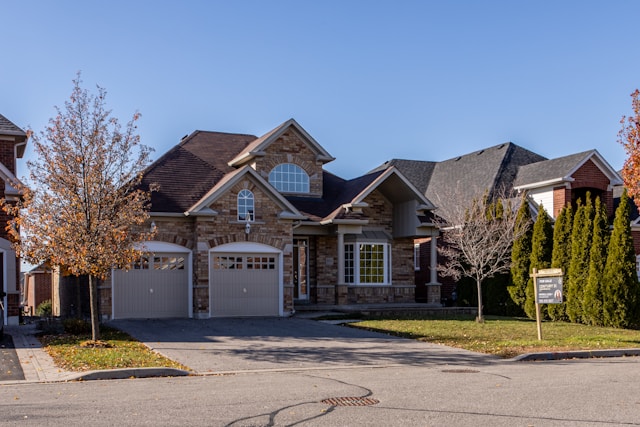Table of Contents
- What Is a Seller’s Market?
- What It’s Like to Buy a Home in a Seller’s Market
- What Makes It a Seller’s Market?
- What This Means for Buyers
- What Is a Buyer’s Market?
- What Happens in a Buyer’s Market?
- What This Means for Sellers
- How Can You Tell If It’s a Buyer’s or Seller’s Market?
Before buying or selling a home, it’s important to understand the type of market you’re in. In a seller’s market, homes sell quickly and often above asking price—great for sellers, but tough for buyers. In a buyer’s market, buyers have more options and negotiating power, while sellers may need to be more flexible. This guide breaks down the key differences so you can make the best move, no matter which side of the market you’re on.
What Is a Seller’s Market?
A seller’s market happens when there are more buyers looking for homes than there are homes available. With limited inventory, sellers hold the advantage. Homes tend to sell quickly, often at higher prices, and buyers may need to act fast—and compete—to secure a property.
What It’s Like to Buy a Home in a Seller’s Market
If you’re house hunting in a seller’s market, you’re entering a space where there are more buyers than homes for sale. That means competition is fierce—and sellers are in the driver’s seat.
What Makes It a Seller’s Market?
- Fewer Homes, More Buyers: There just aren’t enough homes on the market to meet demand.
- Tough Competition: With limited options, buyers often compete for the same listings—sometimes leading to bidding wars.
- Rising Prices: Homes tend to sell for more, simply because more people are trying to buy them.
- Fast Sales: Properties don’t stay on the market long. Sellers can often accept strong offers quickly.
- Less Wiggle Room: Sellers have the upper hand, so they’re less likely to lower the price or cover closing costs.
What This Means for Buyers
- It’s Competitive: Finding the right home can be tough, especially when others are making strong offers.
- You Might Pay More: In many cases, buyers need to offer above the asking price to win the deal.
- Fewer Negotiation Opportunities: Don’t expect sellers to be open to many repairs or price cuts.
- Larger Down Payments May Help: A strong financial offer—like a bigger down payment—can help you stand out.
What Is a Buyer’s Market?
A buyer’s market happens when there are more homes for sale than there are buyers looking to purchase. This creates a situation where sellers have to compete for buyers’ attention. With more options available, buyers gain the upper hand and can often negotiate better prices, more concessions, and favorable terms.
What Happens in a Buyer’s Market?
A buyer’s market in the U.S. housing market occurs when there are more homes for sale than there are buyers. This shift in balance gives buyers more power and flexibility in the homebuying process. Here’s a closer look at what defines a buyer’s market:
- High Supply, Low Demand: The main driver is a large number of homes on the market and fewer people actively looking to buy. This oversupply puts pressure on sellers to compete for buyer attention.
- Lower Prices: With fewer buyers and more homes to choose from, sellers may lower their asking prices to attract offers and get their homes sold.
- Longer Time on Market: Homes in a buyer’s market often stay listed for longer periods. Buyers can take their time, explore more options, and avoid rushing into a decision.
- More Room to Negotiate: Buyers typically have more leverage. This can lead to better terms—like price reductions, help with closing costs, or requests for repairs being accepted more often. Buyers may also face fewer obstacles when including contingencies in their offers.
- What Affects Housing Supply: Things like new home construction, job market shifts, and broader economic changes can all increase the number of homes on the market.
- What Affects Buyer Demand: Mortgage rates, consumer confidence, and government incentives—like tax breaks—can all influence how many people are looking to buy a home.
What does this mean for Buyers?
- Your Home May Take Longer to Sell
In a buyer’s market, homes tend to stay on the market longer due to reduced demand. Use this extra time wisely—declutter, make small repairs, or update key features to help your home stand out. A well-prepped home can make a stronger impression on buyers who have plenty of options.
- Prices May Be Lower
When buyers have more choices, sellers often need to be more flexible on price. If you’re considering adjusting your asking price, research comparable listings in your area. Aim to price your home competitively—at or slightly below similar properties—to attract serious interest.
- Multiple Offers Are Less Likely
Bidding wars are rare in a buyer’s market. Instead of waiting for multiple offers, focus on presenting your home in the best possible light. High-quality photos, home staging, and well-planned open houses can make your listing more appealing and help it stand out from the competition.
- Be Open to Making Concessions
To close the deal, many sellers offer incentives. While lowering the price is the most common concession, you might also consider covering some of the buyer’s closing costs—such as property taxes, title insurance, or other fees. This can be especially helpful for first-time buyers who may be tight on funds and could sway their decision in your favor.
How Can You Tell If It’s a Buyer’s or Seller’s Market?
Before making a move in real estate, it’s important to understand the current market conditions in your area. Is it a buyer’s market or a seller’s market? Here are some clear signs to help you figure it out.
Real Estate Inventory
Check how many homes are currently for sale in your area.
- Lots of listings usually mean a buyer’s market—there’s more supply than demand.
- Fewer listings typically signal a seller’s market, where demand is higher than supply.
Recent Sales Trends
Look at how homes similar to yours (or the one you’re eyeing) have sold.
- Selling above asking price is a strong indicator of a seller’s market.
- Selling below asking price usually means it’s a buyer’s market.
Price Drops
In a buyer’s market, it’s common to see sellers reducing their asking prices.
Check the price history of current listings. If many have dropped recently, that’s a sign the market is leaning in favor of buyers. Just be sure it’s a pattern—not just one or two sellers aiming too high.
Interest Rates
Interest rates can also impact the housing market:
- Higher rates can slow down buying activity, which benefits buyers.
- Lower rates encourage more buyers to enter the market, favoring sellers.
Time on Market
Take note of how long homes are staying on the market:
- Quick sales are common in a seller’s market.
- Longer listing times point to a buyer’s market, where homes take longer to sell.
Market Trends
Keep an eye on overall price trends in your area. If home prices are rising, the market likely favors sellers. If prices are dropping, buyers are in a stronger position.
Understanding whether you’re in a buyer’s market or a seller’s market can make a big difference in how you approach buying or selling a home. In a seller’s market, expect higher prices and tough competition as a buyer—while sellers enjoy more leverage and faster sales. On the flip side, a buyer’s market gives buyers the upper hand with more choices and negotiating power, while sellers may need to be more flexible and patient. By keeping an eye on key indicators like inventory, pricing trends, and time on market, you’ll be better equipped to make smart, timely decisions—no matter which side of the market you’re on.











